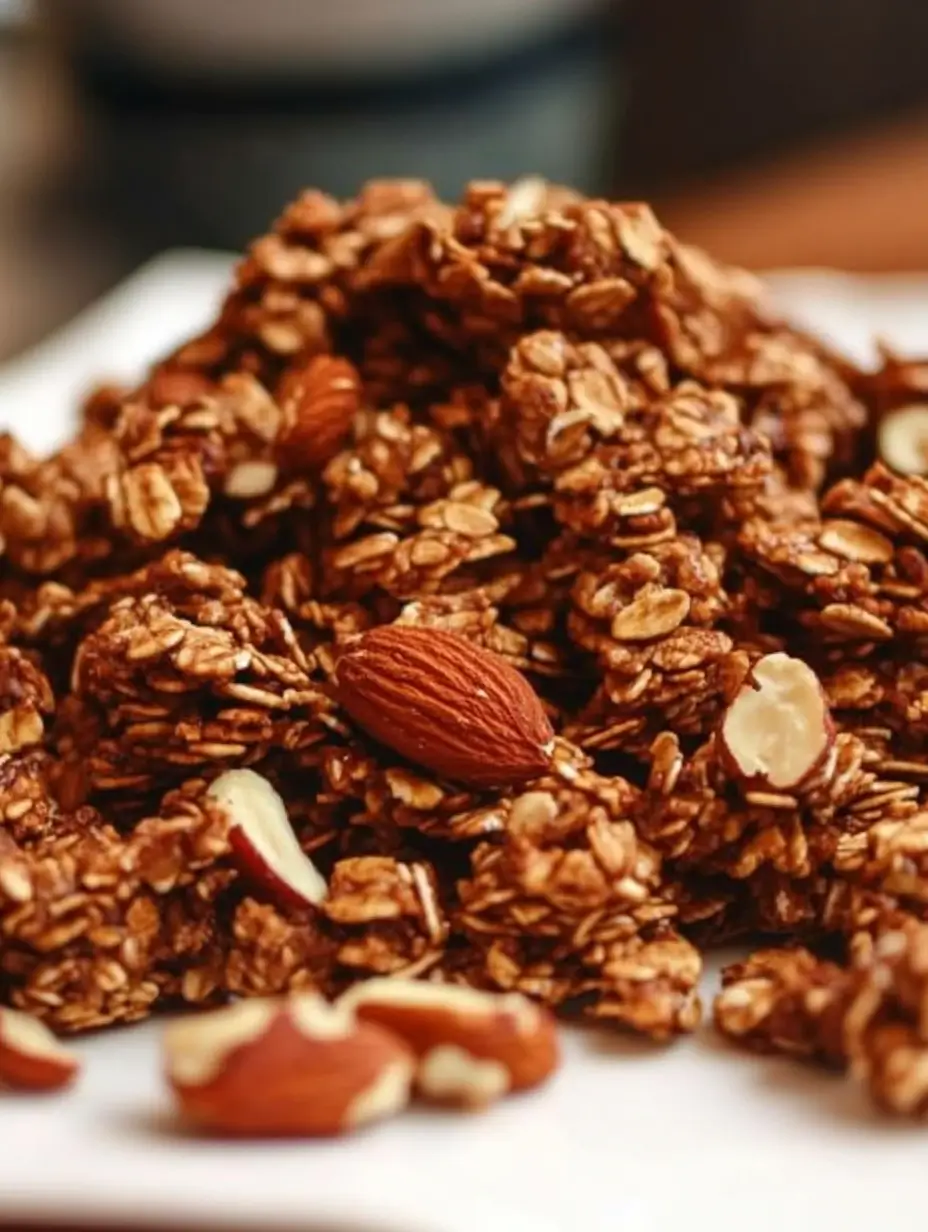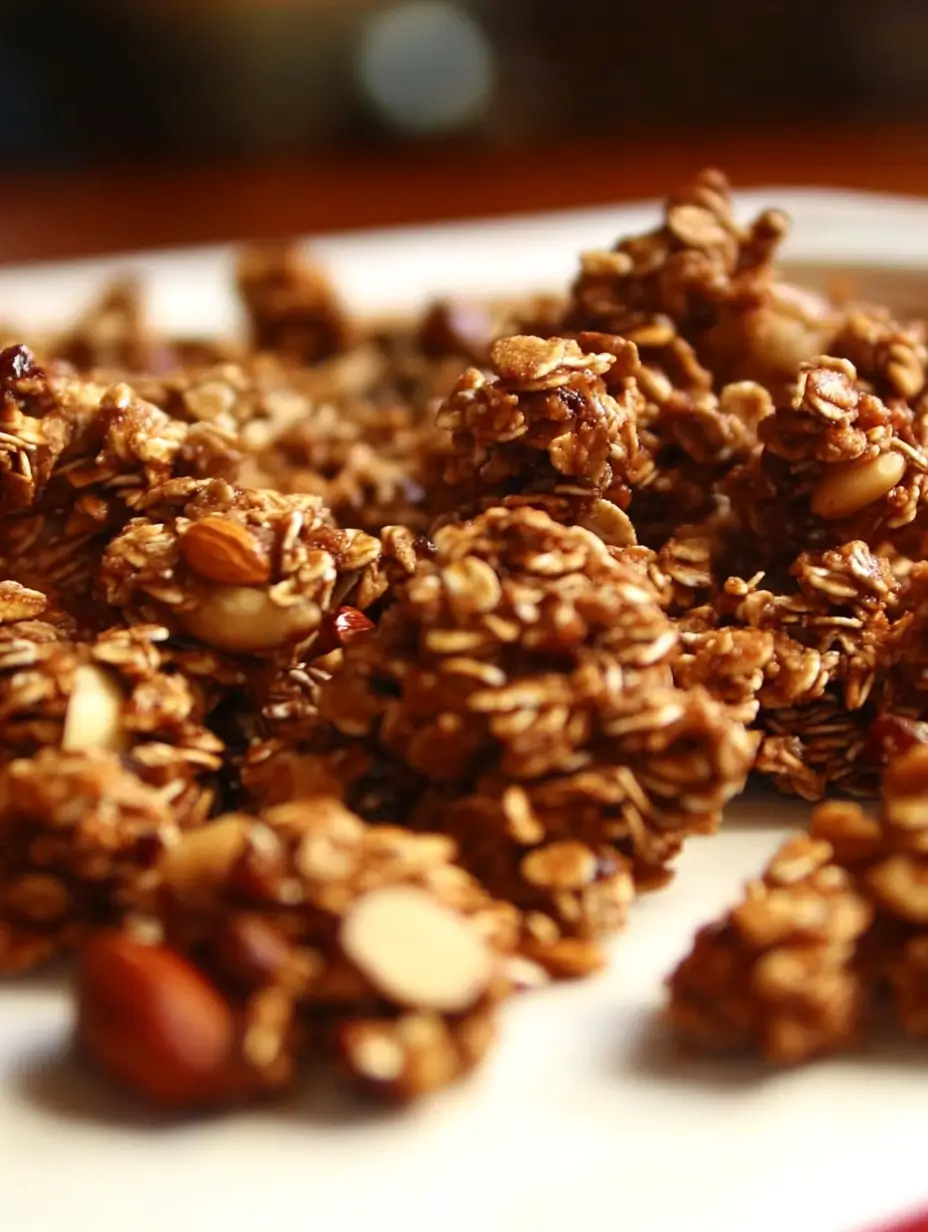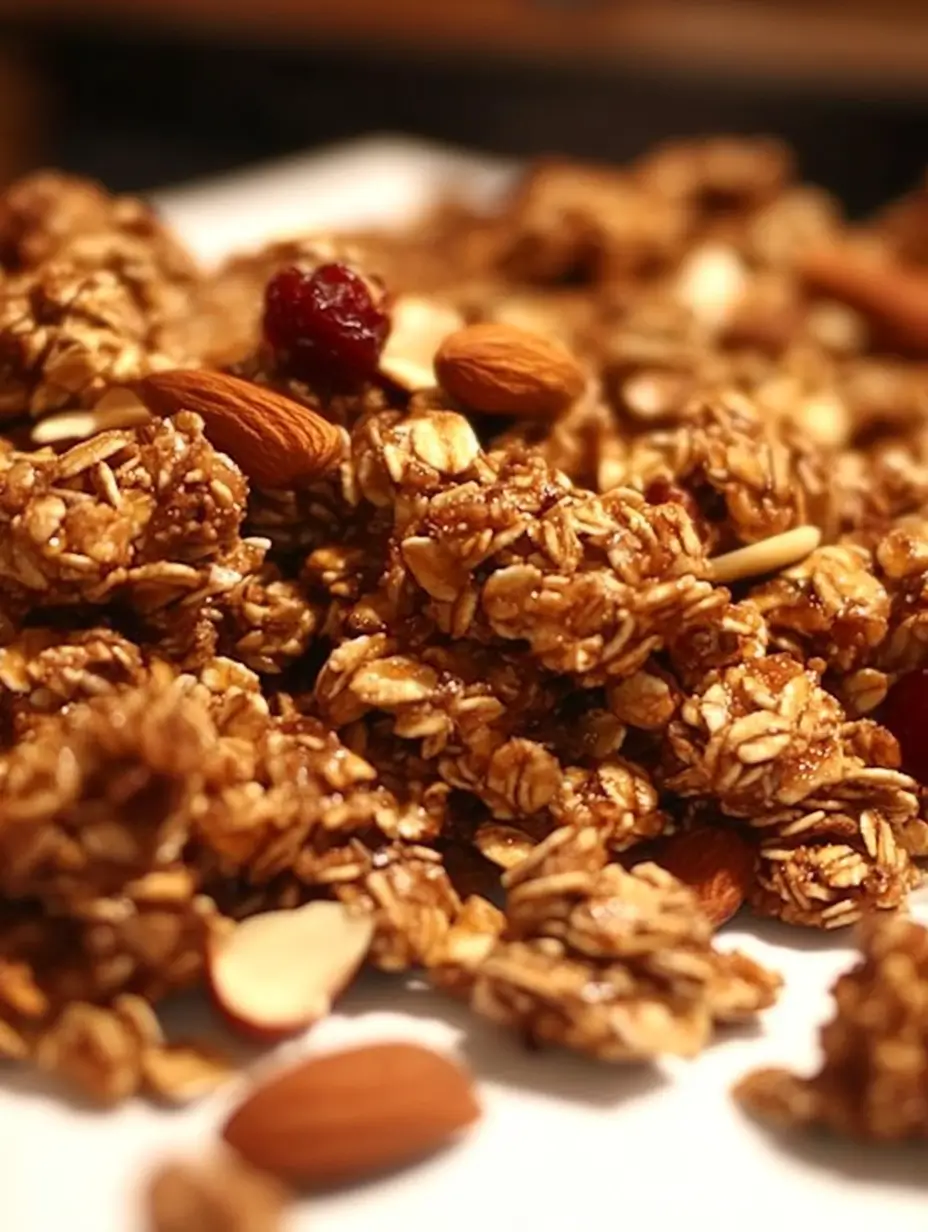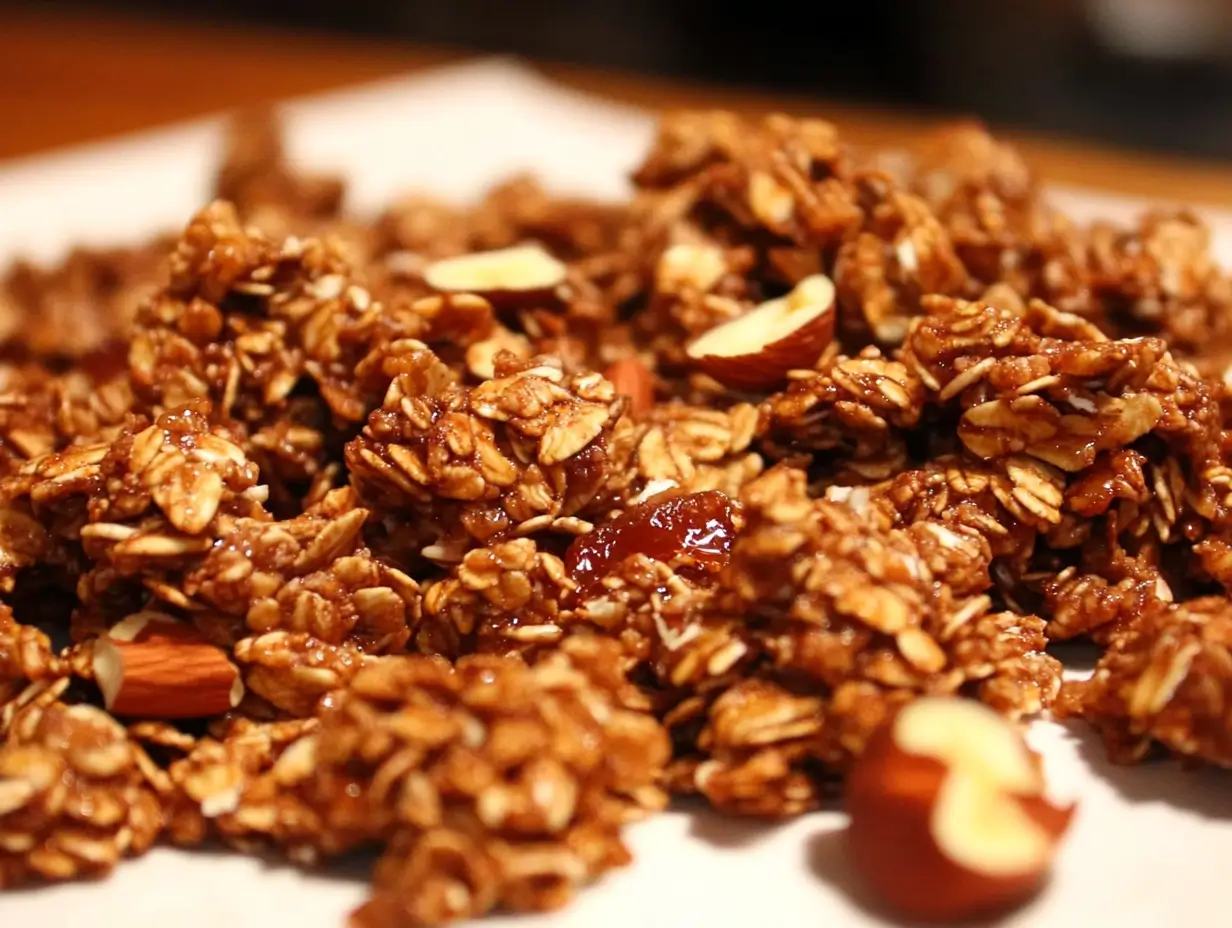Homemade granola is a much-loved treat for many. There are rich flavors and the crunch that makes it so good. But what if, instead of rich flavor and crunch, the result is something soft, chewy, and as disappointing as bland granola? Knowing why homemade granola doesn’t get crunchy can spare you bothersome futile searching and keep you busy perfecting the recipe. This article gives answers to the question: “Why is homemade granola not crunchy?” it extensively discusses the causes of this, ingredient factors, really important techniques, and tips for getting this much-desired crunch.
Common Reasons Why Homemade Granola Lacks Crunch

If you’ve ever wondered, “Why is homemade granola not crunchy?” It might be due to many common mistakes like the following ones :
Insufficient Baking Time
One of the main reasons granola doesn’t turn out crunchy is not baking it long enough. The oats and other ingredients need sufficient time in the oven to dry out and crisp up. If you remove granola too early, it might appear done but retain too much moisture, leaving it soft as it cools.
- How to Tell When Granola Is Done: Look for a light golden-brown color and ensure the edges are slightly darker. The granola will feel softer when hot but hardens as it cools.
- Tip for Optimal Crunch: Extend baking time by a few minutes if you live in a humid environment or notice your granola staying soft.
Low Baking Temperature
Another common pitfall is using a baking temperature that’s too low. Granola thrives on steady, moderate heat that toasts the oats and nuts while caramelizing the sweeteners. If the temperature is too low, you’ll miss out on that satisfying crunch.
- Recommended Temperature: Set your oven between 300°F and 325°F for best results. This range ensures even cooking without risking burnt granola.
- Avoid High Heat: Overly high temperatures can burn sugar-based ingredients before the oats are fully cooked.
Overmixing Ingredients: Key to Fixing Homemade Granola Texture
Overmixing is the enemy of crunchy granola clusters. It’s a common mistake that many homebakers make without even realizing it. While stirring granola during preparation and baking may seem harmless, it can disrupt the formation of those delightful, crunchy clumps that are the hallmarks of great granola.
Why Overmixing Breaks Clusters
For instance, too much stirring breaks up the clustering of granola ingredients, which normally comes about during baking, heating up the oats, nuts, and sweeteners to create pockets of crunchiness. Too much stirring destroys that and leaves the granola crumbles instead of a mouth full of texture.
Sadly, you know when you’re stirring too much because you break apart the clumps that develop naturally in baking, under which oats, nuts, and sweeteners will bind together by heat into these pockets. If you stir too much goes on here, then you just get a crumbly, less appealing mixture instead.
- Cluster Formation Explained: Clusters form when wet ingredients like honey, syrup, or melted butter evenly coat the dry ingredients. During baking, these ingredients act as a glue, helping the oats and nuts stick together. Constant stirring separates the pieces before they have a chance to bond fully.
You may asking yourself, “Why is the homemade granola not crunchy?” could find one explanation: overmixing.
How to Mix Properly
This is the most important step in the preparation of crunchy granola. Tossing the ingredients lightly will ensure that there is enough coating without losing the potential for clumping.
People have said to me, “Why is not the homemade granola crunchy?” when the recipe ends up not being crunchy, probably due to overmixing.
How to Mix Beautifully
It best describes how to get mix-in mixing just right when making really crunchy granola. Tossing gently is all one needs in complete covering and leaving the potential for clumps.
- Pre-Baking Mixing Tips: Use a large mixing bowl to guarantee that the wet and dry ingredients combine thoroughly without excessive stirring. Fold the ingredients together with a spatula rather than stirring aggressively.
- In-Oven Stirring: Limit stirring during baking to once or twice at most. Lightly toss the granola halfway through baking time to promote even browning without breaking apart clusters.

Cluster Preservation Tips
Beyond limiting stirring, there are additional techniques you can use to encourage clusters to form and stay intact.
- Press the Mixture: Before placing the granola in the oven, press it firmly into the baking sheet with the back of a spatula or your hands (covered with parchment paper). This compression helps the ingredients stick together, allowing large clusters to form.
- Cool Without Disturbing: Once the granola is done baking, let it cool completely on the tray before breaking it apart. A portion of cooling time permits the clusters to fully harden and solidify. Stirring or moving around granola while it is still warm will break these.
The Role of Ingredients in Clumping
The ingredients you choose also play a crucial role in cluster formation. Sticky sweeteners like honey or maple syrup and fats like coconut oil help bind the ingredients. Using rolled oats instead of quick oats can also enhance clump formation due to their larger surface area.
If you’ve been frustrated by why homemade granola isn’t crunchy, evaluating your ingredients and mixing technique is a good starting point. Remember, less is often more when it comes to stirring!
Troubleshooting Overmixed Granola
If you suspect you’ve overmixed your granola, don’t worry—there are still ways to salvage it:
- Re-Bake for Clusters: If the granola lacks clumps, drizzle a bit more honey or syrup over the mixture, compress it onto the tray, and bake it for another 5–10 minutes at 300°F.
- Use It Differently: Crumbly granola is still delicious to use as a topping for yogurt, smoothie bowls, or ice cream. While it may not have clusters, it will still deliver great flavor.
By avoiding overmixing and following these tips, you’ll create granola that is full of crispy, golden-brown clusters. For more insights on crunchy granola, stay tuned as we explore how ingredients influence texture in the next section.
Ingredient Factors That Affect Crunchiness
Choice of Sweeteners
The choice of sweeteners is another critical factor in answering “Why is homemade granola not crunchy?”.
The type of sweetener you use can greatly influence whether your granola ends up crunchy or disappointingly soft. Sweeteners like honey, maple syrup, and sugar do more than just add flavor—they play a key role in caramelizing and binding the ingredients.
- Caramelization and Crunch: Natural sweeteners like honey and maple syrup caramelize when baked, creating a crisp texture. However, too much liquid sweetener can make the granola sticky rather than crunchy.
- Finding the Right Balance: Stick to recipes that call for a precise ratio of wet to dry ingredients to avoid sogginess.
If you’re wondering, “Why is homemade granola not crunchy?”, using the wrong sweetener or too much of it might be the culprit.
Fat Content
Fat, such as oil or butter, is essential for crisping and browning granola. Without enough fat, the granola can taste dry and lack the crunch you’re aiming for.
- Best Fats for Crunch: Neutral oils like coconut or sunflower oil work well, as they coat the ingredients evenly and withstand high baking temperatures.
- Avoid Overdoing It: While fat is crucial, too much can weigh down the oats and lead to a greasy finish.
Proportion of Wet to Dry Ingredients
The water and dry ingredients match with perfect balance, and this really matters. If too much moisture were present, the granola would be unable to crisp much in the oven-it would end up soft and chewy.
- How to Achieve Balance: Precisely measuring all ingredients. Ingredients should have a little clumping when pressed together but shall not be too sticky.
- Dry Ingredient Tips: Adding more oats or nuts can help absorb excess moisture and restore the right consistency.
Techniques to Solve Why is Homemade Granola Not Crunchy?
Pressing the Mixture for Better Homemade Granola Texture

Pressing the granola into the baking sheet before putting it in the oven is a game-changer. This simple trick helps create those highly sought-after clumps and a crisp texture.
- How to Press: Use the back of a spatula or your hands (lined with parchment paper) to press the mixture firmly into an even layer.
- Why It Matters: Pressing ensures that the granola bakes in clusters, which dry out and crisp up together.
Cooling Tips to Prevent Soft Granola
Believe it or not, the way you cool your granola makes or breaks its crunch. Pulling it out of the tray too soon or not letting it cool completely can ensure it ends up soggy.
- Cooling Process: Allow the granola to cool on the baking tray for at least 20–30 minutes. As it cools, it hardens and develops its crunch.
- Avoid Disturbing Clumps: Refrain from stirring or transferring the granola while it’s still warm.
Layering the Granola
How you spread the granola on the baking sheet also impacts its texture. Overcrowding the pan leads to uneven baking and less crunch.
- Single-Layer Technique: Spread the granola in a single layer, ensuring that no clumps are piled on top of each other.
- Use Larger Trays: If you’re making a big batch, bake in multiple trays or batches to give each piece enough space to crisp.
With the right techniques and ingredient choices, your granola is bound to be irresistibly crunchy. Next, we’ll dive into how baking equipment and methods affect granola’s texture.
Baking Equipment and Methods
Sometimes, the answer to “Why is homemade granola not crunchy?” is uneven heat distribution. Using parchment paper or rotating trays can help fix this issue.
Use of Parchment Paper or Silicone Mats
The surface you bake your granola on significantly impacts its texture. Parchment paper and silicone mats are excellent options, each with its own benefits for achieving crunch.
- Why Use Parchment Paper? Parchment paper prevents sticking and ensures even heat distribution. It also makes cleaning up a breeze.
- Silicone Mats for Better Browning: Silicone mats provide a non-stick surface that encourages even browning without burning. These are reusable and ideal for frequent bakers.
By choosing the right baking surface, you’ll reduce the chance of unevenly cooked granola while improving overall texture.
Even Heat Distribution
Uneven heat can leave parts of your granola chewy while overcooking others. Proper oven practices can help you achieve consistent results.
- Oven Rack Position: Place your baking tray in the middle rack for the most even heat exposure.
- Rotate Trays Mid-Bake: If you’re baking multiple trays, rotate them halfway through the baking time to ensure uniform crispness.
If you’ve ever wondered why is homemade granola not crunchy even with a great recipe, uneven heat might be the issue.
For more granola inspiration, check out this vanilla nut granola recipe on Trend in Recipes.
FAQs Answering Why is Homemade Granola Not Crunchy?
Why Does My Granola Go Soft After Baking?
Granola often loses its crunch due to poor storage. Moisture from the air can sneak into improperly sealed containers, making even the crispiest granola soft and unappealing.
Proper Storage Tips: Always let granola cool completely before transferring it to an airtight container. Add a silica gel packet or a dry paper towel to absorb any extra moisture.
Avoid Refrigeration: Refrigerating granola can introduce moisture and ruin its texture.
Can I Make Granola Crunchy Again?
Yes, you can revive soft granola! A quick re-bake can restore its crunch.
Re-Baking Process: Spread the granola evenly on a baking sheet and bake at 300°F for about 5–10 minutes. Let it cool completely before storing.
Pro Tip: Add a sprinkle of sugar or drizzle of honey before reheating for extra caramelization.
What Ingredients Are Essential for Crunch?
Certain ingredients are crucial for achieving that perfect crunch. Nuts, seeds, and sweeteners contribute significantly to texture.
Key Additions for Crunch: Include almonds, walnuts, or pumpkin seeds for a hearty texture. Sweeteners like honey or brown sugar enhance the crispness through caramelization.
Experiment with Ratios: Balancing these ingredients with oats and other dry elements ensures every bite is crunchy and flavorful.
For more tips on creating perfectly sticky and crunchy granola, visit this guide on ingredients that make granola stick together.

